I want to see the speed of my VHDL design. As far as I know, it is indicated by Fmax in the Quartus II software. After compiling my design, it shows an Fmax of 653.59 MHz. I wrote a testbench and did some tests to make sure that the design is working as expected. The problem I have with the design is that at the rising edge of the clock, the inputs are set correctly, but the output only comes after one more cycle.
My question is: How can I check the speed of my design (longest delay between the input ports and the output port) and also get the output of the addition at the same time that the inputs are loaded/at the same cycle?
My testbench results are as follows:
a: 0001 and b: 0101 gives XXXX
a: 1001 and b: 0001 gives 0110 (the expected result from the previous
calculation)
a: 1001 and b: 1001 gives 1010 (the expected result from the previous
calculation)
etc
Code:
library ieee;
use ieee.std_logic_1164.all;
use ieee.numeric_std.all;
entity adder is
port(
clk : in STD_LOGIC;
a : in unsigned(3 downto 0);
b : in unsigned(3 downto 0);
sum : out unsigned(3 downto 0)
);
end adder;
architecture rtl of adder is
signal a_r, b_r, sum_r : unsigned(3 downto 0);
begin
sum_r <= a_r + b_r;
process(clk)
begin
if (rising_edge(clk)) then
a_r <= a;
b_r <= b;
sum <= sum_r;
end if;
end process;
end rtl;
Testbench:
library ieee;
use ieee.std_logic_1164.all;
use ieee.numeric_std.all;
entity testbench is
end entity;
architecture behavioral of testbench is
component adder is
port(
clk : in STD_LOGIC;
a : in unsigned(3 downto 0);
b : in unsigned(3 downto 0);
sum : out unsigned(3 downto 0)
);
end component;
signal a, b, sum : unsigned(3 downto 0);
signal clk : STD_LOGIC;
begin
uut: adder
port map(
clk => clk,
a => a,
b => b,
sum => sum
);
stim_process : process
begin
wait for 1 ns;
clk <= '0';
wait for 1 ns;
clk <= '1';
a <= "0001";
b <= "0101";
wait for 1 ns;
clk <= '0';
wait for 1 ns;
clk <= '1';
a <= "1001";
b <= "0001";
wait for 1 ns;
clk <= '0';
wait for 1 ns;
clk <= '1';
a <= "1001";
b <= "1001";
end process;
end behavioral;
